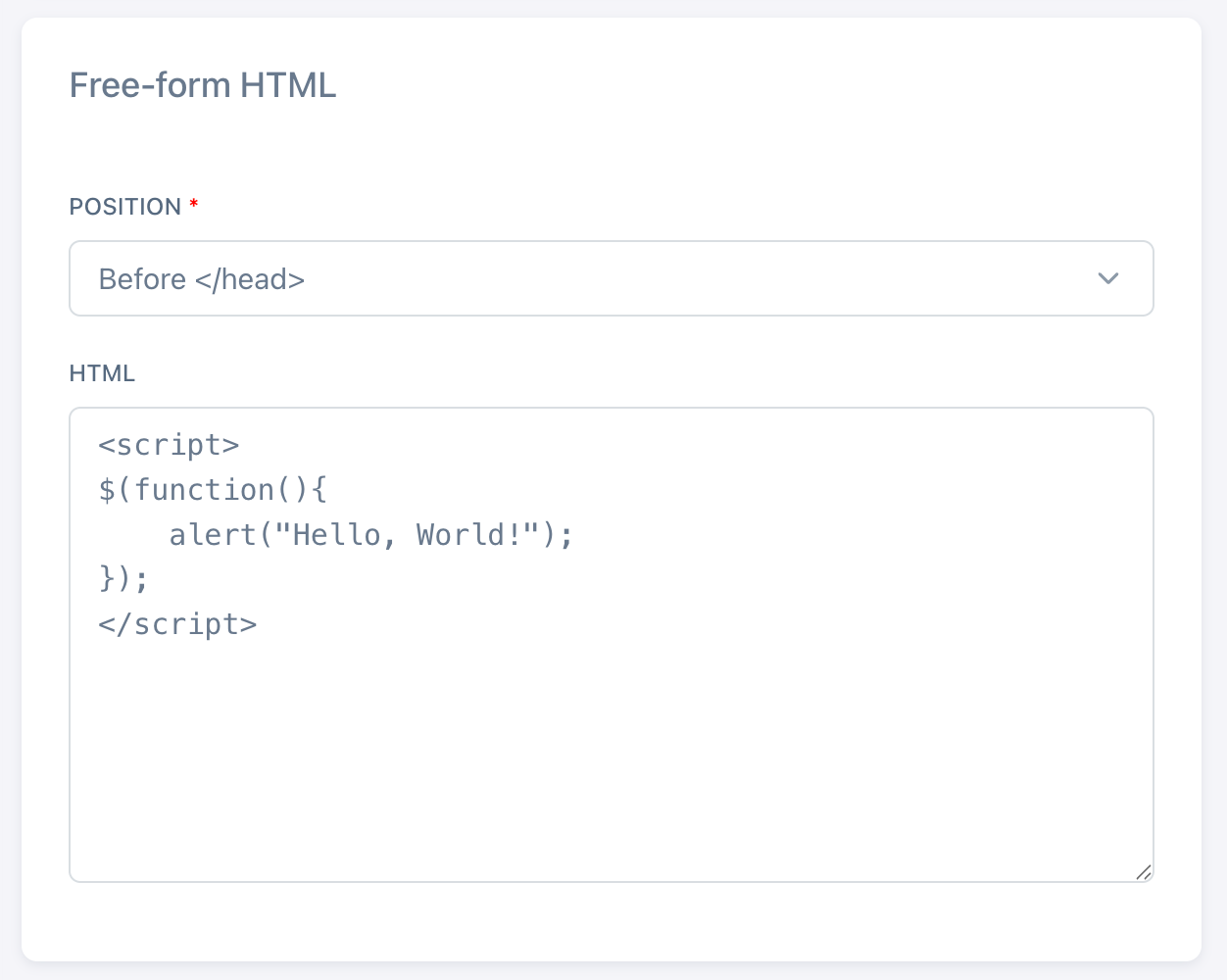Custom HTML & JavaScript for User Portals
Nadles allows you to customize your hosted user portal with free-form HTML and JavaScript, enabling deeper branding and functional customization — including analytics, chat widgets, or style overrides.
Requirements
To enable this feature, you must:- Have User Portal enabled for your account.
- Attach a custom domain to your portal (e.g., app.yourcompany.com).
Where Custom Code is Applied
Your HTML and JavaScript will be applied to all pages in the User Portal. This allows you to fully customize the look, feel, and behavior of the portal experience for your users.Security Limitations
To maintain security and prevent misuse, custom HTML and JavaScript are not applied on login, signup, password reset pages and the likes. These pages are excluded to protect user credentials and prevent potential injection-based attacks.How to Add Custom Code
Go to the User Portal section of your Nadles dashboard. Under Free-form HTML, you’ll find two text areas: Position – Where to inject the code, i.e. after the opening<head> tag, before the closing </head> tag, etc.
HTML – The free-form HTML to be injected into pages.
Save your changes and visit your user portal on the custom domain to see them live.
If you remove your custom domain, the custom code will no longer be applied.
Advanced Use: Blank Pages + User Portal API
To take customization even further, Nadles allows you to: Add blank pages to the user portal (fully empty canvas with your styles applied — only menus, headers and footers). Use the User Portal API to fetch:- Current user info
- Subscription data
- Access tokens for customer subscriptions